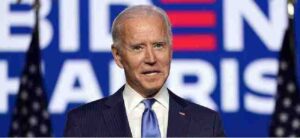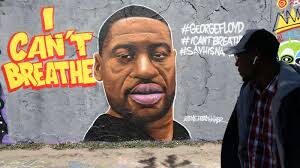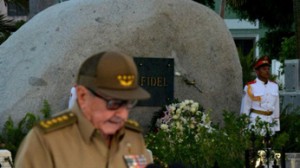Nelson Mandela’s body has been laid to rest in a family plot, after political and religious leaders paid tribute to South Africa’s first black president at a state funeral service.His widow, Graca Machel, and President Jacob Zuma were present for the private, traditional Xhosa burial at Mr Mandela’s ancestral home in Qunu.Mr Zuma had earlier told the larger funeral service that South Africans had to take his legacy forward. Mr Mandela died on 5 December aged 95. A close friend, Ahmed Kathrada, told mourners at the service he had lost an “elder brother” who was with him for many years in prison on Robben island. Mr Mandela’s casket was carried by the military, accompanied by family and friends, from a specially-erected marquee up a hill to the graveside. Before his coffin was lowered into the grave, South African military helicopters and jets staged a fly-past, cannons fired a 21-gun salute and a bugler played the last post. “We have known each other for 65 years. Now he is gone,” said George Bizos, another close friend who was part of the legal team that defended Mr Mandela at his 1964 Rivonia trial. It was a fitting send-off for a man widely seen as the “father of then nation”, the BBC’s Pumza Fihlani said. The final day of South Africa’s 10-day commemoration for its late leader began with his coffin taken on a gun carriage from Mr Mandela’s house to a giant marquee. Members of the family had attended an overnight vigil, where a traditional praise singer is believed to have chanted details of his long journey and life.Inside the marquee, Nelson Mandela’s portrait stood behind 95 candles, representing one for each year of his life. His casket, draped in the South African flag, was placed beneath a lectern where speakers paid their tributes. Some guests sang and danced to celebrate Mr Mandela’s life as the service began. After the national anthem, Nkosi Sikelel’I Africa (God Bless Africa) was sung, the service heard from a family spokesman, Chief Ngangomhlaba Matanzima, who thanked the army medical team that had treated Mr Mandela before he died. “A great tree has fallen, he is now going home to rest with his forefathers. We thank them for lending us such an icon.” Ahmed Kathrada’s voice filled with emotion as he spoke of the difficulty of recent months and of how he had held his friend’s hand the last time he saw him in hospital. “Farewell my dear brother, my mentor, my leader,” he said. Like Nelson Mandela, he was sent to Robben island after the 1964 Rivonia trial, but left jail in 1989, a year before him. Two grandchildren then addressed the congregation. Ndaba who read an obituary, and Nandi, who spoke fondly of her grandfather as a disciplinarian. “We shall miss you… your stern voice when you are not pleased with our behaviour. We shall miss your laughter.” Listening to the tributes were Graca Machel, his widow, and his second wife, Winnie-Madikizela Mandela, who sat either side of President Jacob Zuma. Both women were praised for their love and tolerance, in an address by Malawi’s President Joyce Banda. African National Congress members, veterans of the fight against apartheid and foreign dignitaries – including several African presidents and the Prince of Wales – were among the guests. Archbishop Desmond Tutu – a long-time friend of Nelson Mandela – was also there, as was US talk show host Oprah Winfrey. While the service took place, a 21-gun salute sounded far away in Pretoria. President Zuma, who was booed at last week’s stadium commemoration inSoweto, led the service in song before giving his funeral oration. It had been been a long and painful week, he said. “Whilst the long walk to freedom has ended in the physical sense, our own journey continues,” An unexpected contribution came from Kenneth Kaunda, 89-year-old former president of Zambia, who lightened the tone of the proceedings by jogging to the stage. He recounted failed appeals he had made to two South African leaders, John Vorster and PW Botha, for the release of Mr Mandela and his ANC colleagues from prison. As the political tributes over-ran, the organisers made an unsuccessful attempt to cut back the religious element of the service. The master of ceremonies, ANC Deputy President Cyril Ramaphosa, had earlier explained that burial had to take place at midday, in line with the traditions of Mr Mandela’s Thembu tribe in Qunu. “A person of Mandela’s stature is meant to be laid to rest when the sun is at its highest and when the shadow is at its shortest.” A military procession took the casket on a gun carriage to the grave site, where a chaplain spoke of Mr Mandela achieving ultimate freedom at the end of “truly long walk”. Three helicopters dangling South African flags then flew over the scene followed by six jets and television pictures of the grave site ended. According to tradition, the Thembu community were holding a private traditional Xhosa ceremony – including songs and poems about Mr Mandela’s life and his achievements. An ox was due to be slaughtered and a family elder was to stay near the coffin, to talk “to the body’s spirit”.The burial brought to an end 10 days of mourning across South Africa.’Sad but happy’: Tens of thousands of people flocked to the FNB stadium for a public memorial on Tuesday, to hear President Barack Obama and other international leaders pay tribute to Mr Mandela. Over the next three days, at least 100,000 people saw the former president’s body lying in state in Pretoria. Thousands more had to be turned away. On Saturday, Mr Mandela’s coffin was flown from Waterkloof airbase in Pretoria to Mthatha in the Eastern Cape. A military guard of honour then took the casket on a 20-mile (32km) route to Qunu, where Mr Mandela had wanted to spend his final days.Crowds waving flags and cheering and singing lined the route, which culminated at the Mandela homestead. – BBC News




